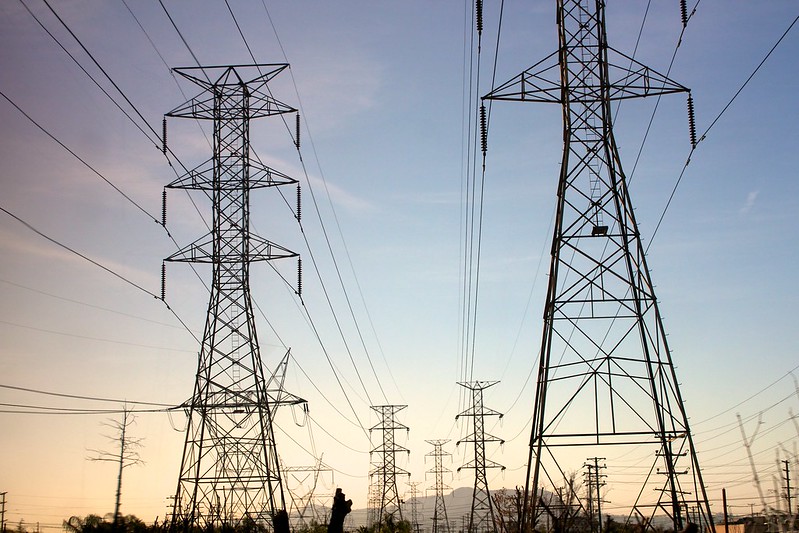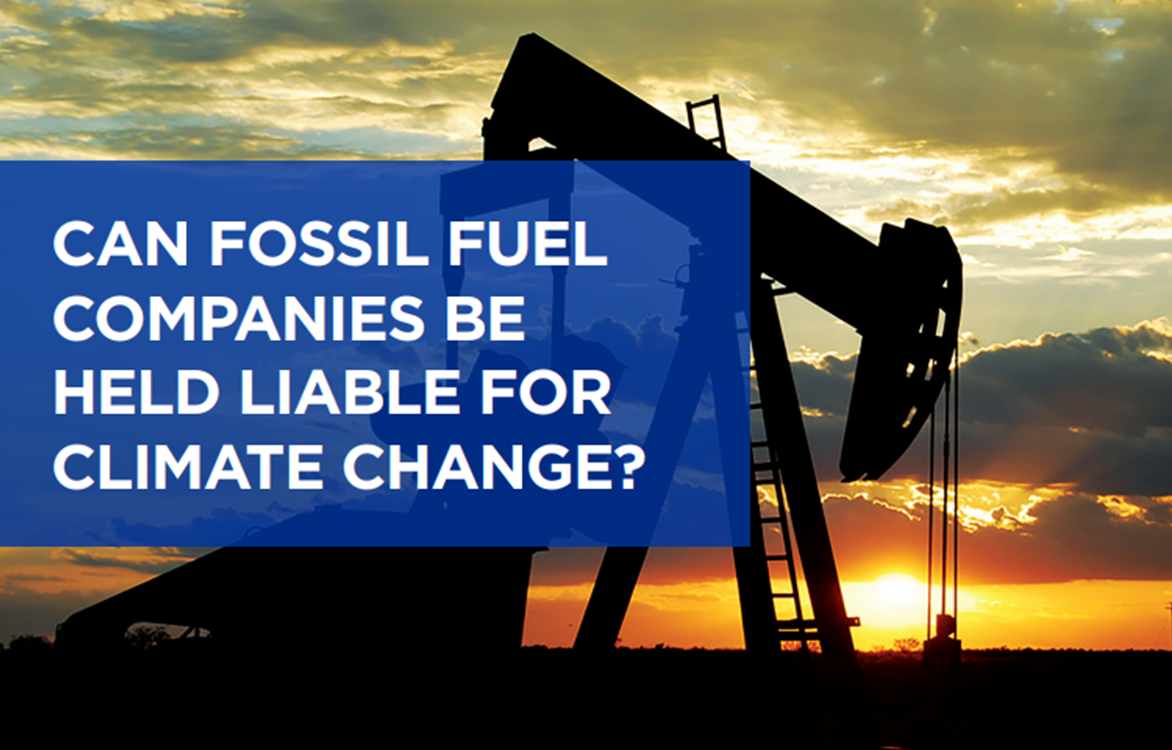By Romany M. Webb

The Inflation Reduction Act (IRA) has been described as being “all carrot” and “no stick” but that is not entirely correct. It is certainly true that the IRA uses “carrots” – principally in the form of tax credits – to incentivize actions that will reduce greenhouse gas emissions. For example, the IRA extends and expands existing tax credits for renewable electricity production, and creates a new credit for electricity production at certain nuclear power plants. The IRA also provides billions of dollars for grant, loan, and similar programs to be administered by various federal agencies. The Environmental Protection Agency (EPA), for instance, has been allocated over $1.5 billion for “grants, rebates, contracts, loans” and “other activities” to reduce greenhouse gas emissions from the oil and natural gas sector. That sector is also affected by an important new “stick” created by the IRA.
The stick takes the form of a “methane emissions charge,” which EPA must collect from certain entities in the oil and natural gas sector, unless and until stringent regulations controlling the sector’s methane emissions are implemented. While the charge is somewhat limited, its inclusion in the IRA is nevertheless a big deal. It represents the first time the federal government has levied a fee on the emission of any greenhouse gas.
Starting with methane was likely more politically feasible than carbon dioxide for several reasons. For one thing, methane is emitted in smaller quantities than carbon dioxide, accounting for just 11 percent of total national greenhouse gas emissions (compared to 79 percent for carbon dioxide). Despite that, however, reducing methane emissions could have major climate benefits. Methane is a much more potent warming agent than carbon dioxide, trapping 87 times more heat in the earth’s atmosphere in the first twenty years after it is released (on a pound-for-pound basis). Given that, and since methane has a relatively short atmospheric life (around 10years), reducing methane emissions now could help to mitigate climate change in the short term and thus buy us time to reduce carbon dioxide emissions.
Controlling methane emissions should, at least in theory, also be somewhat easier than reducing carbon dioxide emissions. Whereas carbon dioxide is emitted by a wide range of activities, most methane emissions come from just three sectors. According to EPA, agriculture is the largest source of methane emissions (accounting for 38% of the national total in 2020), followed by oil and natural gas (33%), and waste management (16%). (Previous studies have shown that EPA significantly underestimates methane emissions from the oil and natural gas sector, which may, in fact, be a larger source of methane than agriculture.) The methane emissions charge in the IRA will only apply to certain parts of the oil and natural gas sector, but its adoption is still an important development that could deliver significant climate benefits.
Most methane emissions from the oil and natural gas sector are the result of accidental leakage and intention venting of natural gas, which predominantly methane. Preventing leaks and venting not only helps to reduce methane emissions and thus mitigate climate change, but also has financial benefits for oil and gas producers who can sell any natural gas they capture or do not leak. The proceeds from the sale help to offset any investment in capture systems, meaning that emissions reductions can often be achieved at little or no cost. Indeed, according to a 2021 report by the International Energy Agency, almost 45 percent of global methane emissions from oil and natural gas operations could be avoided at no net cost. An earlier study focused on the U.S. found that domestic emissions from onshore operations could be cut by 40 percent at a cost of less than one cent per thousand cubic feet of natural gas produced. (To put that in perspective, on average, U.S. households currently pay $17.55 per thousand cubic feet of natural gas.)
Nevertheless, to date, federal regulation of methane emissions from the oil and natural gas sector has been fairly limited. In 2016, EPA adopted regulations (known as “New Source Performance Standards” or “NSPS”) aimed at controlling methane emissions from certain facilities used in the production, processing, transmission, and storage of oil and natural gas. The NSPS only applied to so-called “new facilities” constructed after September 18, 2015 but, even so, EPA estimated that they would cut methane emissions by 510,000 short tons or 11 million metric tons of carbon dioxide equivalent in 2025. Seeking to further reduce emissions, shortly after finalizing the NSPS, EPA began developing regulations to control emissions from existing facilities constructed before September 18, 2015. However, when President Trump took office a few months later, EPA halted work on the existing facility regulations. It also commenced a review of the NSPS and, in 2020, rescinded them. (For a discussion of the effect of the rescission, see our previous post here.)
Shortly after President Biden’s inauguration, Congress passed a resolution to undo EPA’s 2020 rescission of the 2016 NSPS, effectively reinstating it. Later, in November 2021, EPA proposed to strengthen the 2016 NSPS and establish new regulations for existing facilities. That proposal has not yet been finalized, however. Meanwhile, Congress has forged ahead, establishing a new “Methane Emissions Reduction Program” in the IRA.
Central to the program is the methane emissions charge, which the IRA authorizes EPA to collect from certain entities in the oil and natural gas sector starting in 2024. EPA can, however, waive the charge if it finalizes the NSPS and existing facility regulations it proposed in November 2021 (or other regulations that result in equivalent emissions reductions) and those regulations are “in effect in all states.” (Note that any existing facility regulations EPA adopts will need to be implemented by the states through so-called “state implementation plans.” If one or more states fail to act, EPA can adopt a “federal implementation plan.” No waiver can be granted unless and until all of the state plans, and any federal plan, are finalized and in force.)
The methane emissions charge will start at $900 per metric ton of methane emitted in 2024 and increase to $1,200 in 2025 and $1,500 in 2026. Only facilities meeting the following two criteria will be subject to the charge:
- facilities must fall within one of the following industry segments:
- on- or offshore oil and natural gas production;
- onshore natural gas processing;
- onshore oil and natural gas gathering;
- onshore natural gas transmission;
- underground natural gas storage; or
- liquified natural gas (LNG) import, export, or storage; and
- facilities must have annual reported methane emissions exceeding 25,000 metric tons of carbon dioxide equivalent.
Initial analysis by the Congressional Research Service estimates that over 2,100 facilities meet these requirements and thus would be subject to the charge. Methane emissions from the covered facilities totaled approximately 78.3 million metric tons of carbon dioxide equivalent in 2019. Covered facilities will not, however, be required to pay the charge on all of those emissions.
The IRA establishes “emissions thresholds” for each type of covered facility. The methane emissions charge will only be levied on emissions that exceed those thresholds. Thus, for example, oil and natural production and processing facilities will only pay the charge on methane emissions that exceed:
- 0.2% of the total amount of natural gas the facility sends for sale; or
- if the facility only sends oil (and no natural gas for sale), 10 metric tons of methane per million barrels of oil sent to sale.
Gas transmission facilities will only pay for methane emissions that exceed 0.11% of the total amount of gas the facility sends for sale. Gas gathering, storage, and LNG facilities will only pay for methane emissions that exceed 0.05% of the total amount of gas sent for sale. The charge will not apply to any emissions from natural gas distribution facilities.
As the Congressional Research Service has recognized, “[t]hese thresholds effectively allow for some amount of methane to be released from [covered] facilities without being subject to the charge, thus reducing the amount of emissions . . . that would be subject to the charge.” Based on 2019 emissions data, the Congressional Research Service estimated that the charge would apply to approximately 62 percent of methane emissions from covered onshore oil and natural gas production facilities, and 71 percent of emissions from covered onshore oil and natural gas gathering facilities. And, remember, only the largest emitting facilities are covered. Still, the Congressional Research Service estimates that the methane emissions charge will raise around $1.1 billion in revenue in FY2026, rising to $1.4 billion in FY2030.
Despite its limited coverage, enactment of the methane emissions charge is a significant step forward. As noted above, the history of methane regulation in the U.S. has been one of stops and starts, with the Obama administration adopting emissions controls only to have them eliminated by the Trump administration and then reinstated under President Biden. The methane emissions charge in the IRA provides an important regulatory backstop. The IRA authorizes EPA to waive the charge if stringent regulations are put in place, but makes clear that the waiver will only remain in effect as long as the regulations do. The IRA states that, if the regulations cease to apply to a covered facility, that “facility will again be subject to the [methane emissions] charge.” This should help to ensure that, even if future administrations want to reverse course on methane regulation, or if the courts were to strike down the regulations, the oil and natural gas industry will have a reason to continue controlling emissions. If they don’t, they will pay the price.
This is test biographical description.



